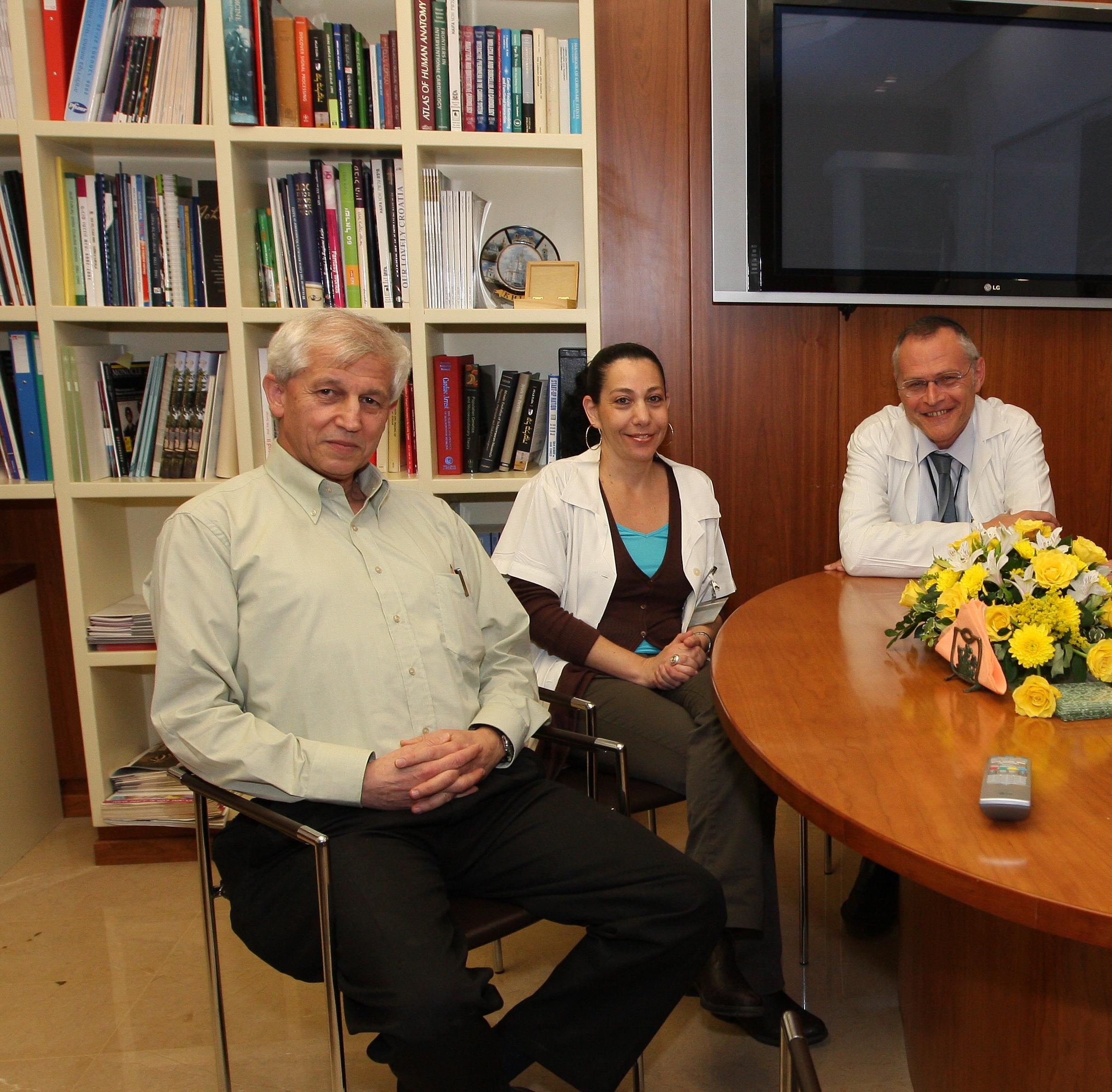Researchers at the Rambam Medical School and the Rappaport Faculty of Medicine at the Technion were able to identify the exact defect that causes the loss of phosphorus through the kidney and the severe bone disease in these patients. This is reported by the New England Journal of Medicine

The kidney functions as the main regulator of the phosphorus balance in the body, and it does this through a delicate and precise balance between filtering the phosphorus from the blood and excreting it, and reabsorbing it from the initial urine that is formed. As a result of this delicate balance, there is no unnecessary loss of phosphorus through the urine, and the body preserves the amounts of phosphorus it needs to build the skeleton and maintain the integrity of the various cellular systems in the activity of which phosphorus plays a part.
While most of the components participating in the process of regulating the phosphorus balance in the body have been identified over the years, there is still uncertainty regarding the exact identity of the particular component within the human kidney that is responsible for most of the reabsorption of phosphorus and preventing its loss through the urine.
This scientific riddle was recently solved by Dr. Daniela Magen, Prof. Israel Zelikovich, Prof. Karl Skortsky, researchers at the Rambam Medical School and the Rappaport Faculty of Medicine at the Technion and their colleagues, in collaboration with a group of researchers from the University of Montreal in Canada.
In this study, Dr. Magen and her colleagues based themselves on a scientific report published over two decades ago, also in the New England Journal of Medicine by a group of Israeli researchers from Tel Aviv University led by Prof. Martin Tider (who is also a participant in the current study). In a report from twenty years ago, Prof. Tider and his colleagues described a pair of sibling children who suffered from severe softening of the bones, and from a syndrome that includes a significant loss of phosphorus, calcium, sugar, amino acids and proteins through the kidney - a condition known in the medical language as "renal Panconi syndrome".
Based on this old report, Dr. Magen and her colleagues, with the help of Prof. Tider, were able to locate these patients 20 years later, and to obtain their consent and the consent of their family members to perform genetic research, following which the researchers were able to identify the exact defect that causes the loss of phosphorus through the kidney and the bone disease difficulty in these patients. Through the use of advanced methods in molecular biology, it was found that the genetic defect in these patients is related to the function of a renal protein whose importance in the absorption of phosphorus in the human kidney was in doubt for a long time.
Additional experiments conducted as part of this study indicated that the defective protein is "stuck" inside the kidney cells without being able to reach the cell membrane, which prevents it from performing its role in absorbing phosphorus from the urine. Surprisingly, it was found that a genetic defect in this single protein causes extensive kidney damage than expected, and a disturbance in other functions of the kidney.
This new finding is of crucial importance in revealing the role of the protein involved in the disease in maintaining the proper phosphorus balance in the human body. Also, the understanding that damage to this protein causes extensive renal damage in addition to damage to the phosphorus balance sheds light on possible additional functions of this protein in the normal kidney.
This research will allow for an in-depth examination of the exact role of this protein and other proteins related to it in determining the phosphorus balance in the body in various disease and health conditions. The publication of the research results in the New England Journal of Medicine may raise awareness about the importance of maintaining a balanced economy in terms of vitamin and mineral content, which together with an active and healthy lifestyle will help maintain bone strength and health and prevent skeletal diseases resulting from mineral deficiencies. On the other hand, it should be remembered that excessive consumption of phosphorus, especially in combination with kidney failure, can cause the deposition of excess phosphorus in the soft tissues outside the skeleton and in the blood vessel wall, which can cause the arteries to "harden" and become calcified.
Background on the role of phosphorus
Phosphorus is a chemical element, which in its form as a phosphate salt is one of the most important building blocks of the human body. Phosphorus, together with calcium and other minerals, is used as one of the main components of skeletal bones and teeth. In addition to these, phosphorus makes up the ATP molecule, which is used as an available source of energy in the body's cells, and the DNA and RNA molecules, which make up the genetic material of every living being. In this way, phosphorus serves as a cornerstone in each of the body's cells and tissues.
It is not surprising, therefore, when the body maintains a sensitive and delicate regulatory system whose purpose is to maintain a proper phosphorus balance. A significant violation of this delicate balance will lead to a phosphorus deficiency that will cause serious diseases that affect the various body systems, such as damage to the skeleton due to the softening and weakening of the bones during their growth period - a condition known in the medical language as "rickets".
Link to the abstract of the article on the New England Journal of Medicine website:
